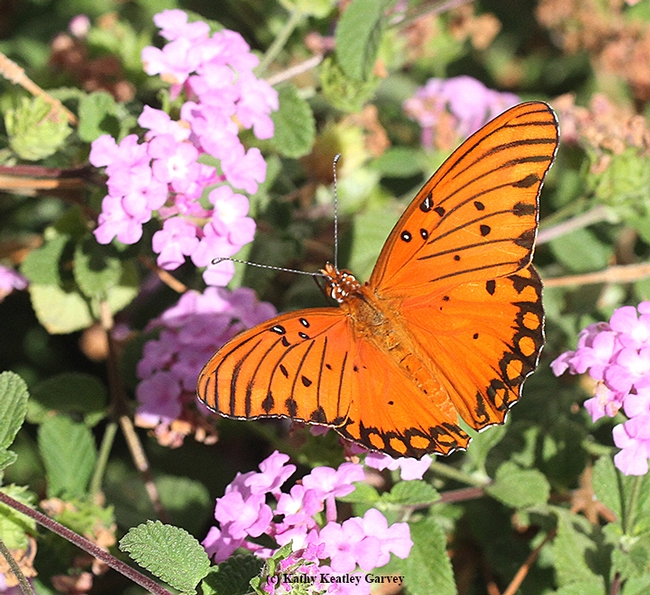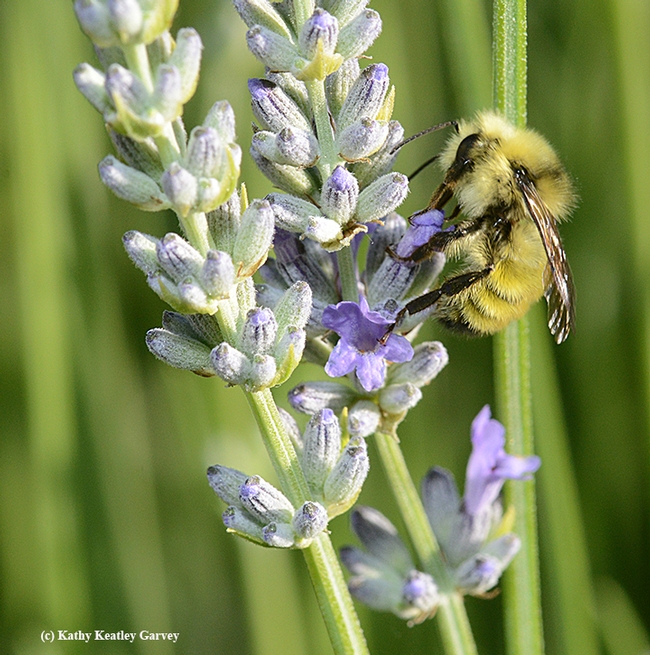If want to beautify your yard, attract pollinators, and save money at the same time, then you'll want to attend the UC Davis Arboretum Plant Sale on Saturday, Nov. 5. It's the final clearance sale of the season, and it will take place from 9 a.m. to 1 p.m. at the Aboretum Teaching Nursery on Garrod Drive, UC Davis campus.
Every plant will be marked down at least 20 percent, officials said. See list of plants here. Members save 10 percent and you can join at the door.
Taylor Lewis, UC Davis Arboretum and Public Garden nursery manager, says that autumn, with its shorter days and cooler temperatures, is "the best time of year for new planting whether you are renovating a lawn area or adding new plants to a mature landscape."
He and Ellen Zagory, director of public horticulture for the UC Davis Arboretum and Public Garden, list five reasons why plant establishment is much easier now.
- Less water use – Thanks to recent rains the soil moisture can be kept constant with less irrigation.
- Softer soil – The soil is softer now so it's easier to dig holes!
- Fewer weeds – Unwanted plant life is less prolific thanks to less sun and cooler temperatures.
- Less stress – Cooler temperatures also are less stressful to new plants.
- Hearty roots – When the air temperature is cooler than the soil temperature, plants put more energy into root growth without new top growth, which results in heartier root systems and stronger plants overall.
Zagory points out: “There isn't going to be much growth above ground where you can see it, but just wait . . . come spring your plants will show you how happy they are you planted in fall!”
Many plants at the Nov. 5th sale are geared for pollinators. Some of pollinators' favorite foods include lavender, salvia, catmint, aster, butterfly bush, lantana, borage, salvia, sunflowers, blanket flower, cone flowers, and penstemon. And many more!
Want to attract butterflies? Consider not only the nectar-producing plants but their host plants. For example, monarchs lay their eggs only on their host plant, milkweed (genus Asclepias), the only plant the caterpillars will eat.
A few other host plants of butterflies:
- Gulf Fritillaries: Passion flower vine (genus Passiflora)
- Anise swallowtails: Sweet fennel (genus Foeniculum)
- Checkered skippers: Mallow (genus Malva)
- Western tiger swallowtails: Cottonwood and aspen cottonwood and aspen (Populus), willows (Salix), wild cherry (Prunus), and ash (Fraxinus).
- Pipevine swallowtail: Dutchmen's pipe or pipevine
The website of Art Shapiro, UC Davis distinguished professor of evolution and ecology, offers a wealth of information on California butterflies. He's been studying the butterfly populations of Central California for more than four decades.
Calflora is the go-to site for a database of California non-native and native plants, invasive plants and rare plants.
The California Native Plant Society website encourage us to plant native plants.
The UC Berkeley Urban Bee Lab website recommends what to plant for native bees.
Books? Yes. Two of the most recently published:
California Bees and Blooms, a Guide for Gardeners and Naturalists is the work of UC-affiliated authors Gordon Frankie, Robbin Thorp, Barbara Ertter and Rollin Coville.
The Bee-Friendly Garden: Design an Abundant, Flower-Filled Yard that Nurtures Bees and Supports Biodiversity, by award-winning garden designerKate Frey and bee expert Gretchen LeBuhn of San Francisco State University, will guide you in selecting bee plants and designing your garden.
Attached Images:

A Western tiger swallowtail nectaring on a butterfly bush. (Photo by Kathy Keatley Garvey)

A Gulf Fritillary takes a liking to Lantana. (Photo by Kathy Keatley Garvey)

A bumble bee, Bombus vandykei, nectaring on lavender. (Photo by Kathy Keatley Garvey)

A honey bee nectaring on Verbena. (Photo by Kathy Keatley Garvey)